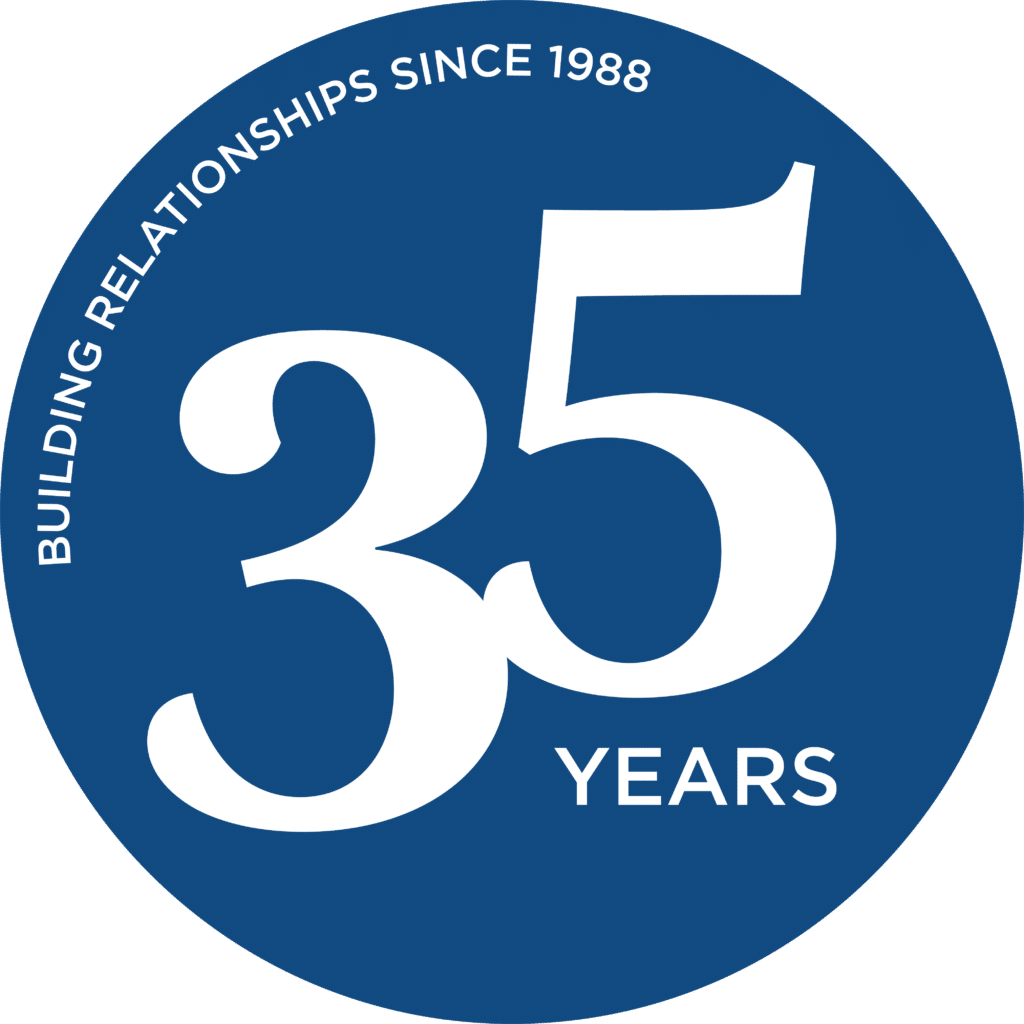From a young age we are taught the Golden Rule: Treat people how you want to be treated. Given that that rule is embedded into our heads from kindergarten, why is it so difficult for us to maintain it as we get older, especially in a professional setting? The foundation of the Golden Rule is respect, as it fosters safety and security. Implementing respectful workplace practices allows a company to remain a safe and secure place for all employees in hopes of eliminating bullying, harassment, and discrimination. However, in the workplace, respect is not always at the top of everyone’s agenda, which causes harm to not only the employees but also the company.
Why Respect Matters in the Workplace
Feeling respected by superiors was ranked as the most important leadership behavior in a Georgetown University survey of 20,000 employees worldwide. However, employees continue to report disrespectful and uncivil behavior each year. In fact, research shows 98 percent of employees experience uncivil behavior at work.
Respect for employees by management—as well as mutual respect among employees—plays a major role in the health of a company’s culture—and its bottom line. When employees feel respected and confident that they matter, they are more satisfied, happy, engaged, and motivated. However, when employees experience rude or disrespectful behavior at work, they report lower engagement, suffer more mental and physical health problems and are more likely to burn out and quit.
The most important process for eliminating harassment in the workplace is being able to identify it. Since harassment comes in many different forms (and sometimes is not so overt or easily detected), it is vital that employers educate themselves so they can identify when it is happening.
What Disrespect in the Workplace Looks Like
Disrespectful behavior in the workplace is any behavior that is unprofessional, inappropriate, rude, unpleasant, disturbing, or offensive. This type of behavior can come in many shapes and sizes; it can be obvious such as bullying or discrimination, or subtle, taking the form of rumors or passive aggressive remarks.
Disrespectful behavior can fall into several categories, including the following:
Bullying
Bullying is something that almost all people experience starting from a young age. Efforts are implemented in schools to prevent bullying in all aspects, but often, this does not end the cycle, thus, leading to employers having to execute similar programs into their places of work. Picking fun at, isolating others, spreading rumors, and hostility all transfer from the playground to the conference room seamlessly.
A study conducted by Workplace Bullying shows that 30 percent of Americans are bullied in the workplace, with 61.3 percent of that bullying being same-gender bullying. This can range anywhere from:
- Isolation
- Implementing impossible expectations
- Excessive micromanaging
- Spreading rumors
- Aggression
These behaviors may not seem to be as impactful as what many believe to be harassment, but often, such bullying can lead to a loss in production and morale. In fact, bullying results in companies losing more than $250 million every year, or about $14,000 per employee.
Cyberbullying
Since the rise of the Covid-19 pandemic, many companies have opted for a hybrid work schedule in hopes of curbing the virus in their workplace. However, the same cannot be said for workplace harassment.
The idea that “no one is watching” plays a large role in the continuity of harassment even in a remote setting. According to Jennifer Brown “…employees have felt as if online environments are the Wild West, where traditional rules don’t apply.”
Fifty-two percent of women have reported experiences of harassment within the past year. Remarks pertaining to children and unavailability due to household responsibilities still make their way around the office, even if it is a remote setting. The correlation between working women and discrimination dates back hundreds of years. Although the glass ceiling has shattered, there are still people eager to glue the pieces back together.
Harassment
Depending on who you speak to, harassment can be defined in a multitude of ways. Harassment is defined as unwelcome conduct based on race, color, religion, sex, national origin, age, disability, or genetic information. Often, the most common form of harassment that comes to mind is sexual harassment.
Sexual Harassment
Sexual harassment in the workplace can stem from what one believes to be a friendly touch on the shoulder to a supervisor insinuating a quid pro-quo-based incentive.
Between 2018 and 2021, women filed 78.2 percent of all sexual harassment charges and 62.2 percent of all harassment charges according to the EEOC. Although women make up most sexual harassment victims, it is not exclusive to them.
In the past decade, 16-18 percent of men have filed sexual harassment complaints to the EEOC as stated in an article published by Porzio, Bromberg & Newman. Men are less likely to report sexual harassment overall, fearful of stereotyping and retaliation.
Discrimination
Discrimination is, unfortunately, an aspect of social climate that is difficult to eliminate. Whether it be on basis of race, disability, religion, or sexual orientation, no one is excluded from the harms of it because discrimination knows no discrimination.
Disability
People with disabilities make up the largest minority group in the United States and encounter discrimination on a daily basis.
Take the case of EEOC vs. Walmart Stores East for example. In 2014, Walmart incorporated computerized scheduling for employees. This may sound easy or convenient to some, but not to someone with a disability. A veteran employee with Down Syndrome faced the challenges of this new computer system when it changed the hours she was working. Given her condition, she is required to maintain a specific daily routine, one that had been implemented in the entirety of her employment. When concern was raised about the schedule change, nothing was done to accommodate it. Due to the lack of consideration on Walmart’s behalf, this resulted in the employee having attendance issues, leading to her termination in 2015.
What could Walmart have done to prevent this? What trainings could have been implemented for supervisors to make accommodations for disabled employees? The lack of respect for the work of a long-term disabled employee goes to show the lack of respect and lack of value Walmart held for this employee; surely, she has not been the only one who has been a victim to such discrimination.
Race
The line between discrimination and race is a fine one. Even with the Civil Rights Movement in the sixties, race discrimination is still a very real problem for people of color in their everyday lives. Race discrimination in the workplace can range from unequal pay to hostile work environments, leaving people of color with not only physical safety concerns, but also job security concerns.
In 2019, Glow Networks had to pay $70 million in favor of 10 employees for the following race-discrimination practices:
- Promotion denials
- Unequal pay
- Hostile work environments
- Firings and lay offs
Ensuring that all employees feel safe and respected in the workplace should be a top priority for all people in all work settings regardless of their race. Implementing safe spaces where issues can be addressed discreetly is one way of reassuring employees of color that they are safe and respected. It can also lead to less litigation and more resolution.
LGBTQIA+
With recent laws pertaining to protections of sexual orientation, more and more people have made it known they are a part of the LGBTQIA+ community in their place of work. However, as with race, just because there are protective laws does not mean there is not a fine line between discriminatory practices.
For those in the community who feel safe enough to come out in the workplace, it is the job of the employer to maintain that safety at all costs to ensure that all employees, regardless of sexual orientation, are treated equally. Unfortunately, that is not always the case. According to UCLA School of Law, in 2021, LGBTQ employees felt like they are twice as likely to feel they are treated worse than non-LGBTQ persons. On top of this, 45 percent of employees report the use of anti-LGBTQ remarks in the workplace—roughly ¼ of employees report unfair treatment.
3 Ways to Promote Respect in the Workplace
Communication – Having an effective communication process where employees can voice their concerns also plays a role in eliminating harassment. Having anonymous complaint boxes, an open-door policy, or regular one-on-one meetings with employees are just a few ways employers can implement anti-harassment culture in the workplace. This will allow employees to feel safe, seen, and heard when it comes to concerns.
Surveys & Feedback – Conduct employee engagement surveys and feedback to know if disrespectful behavior is occurring at your workplace. In 2019, a study by NCBI found that black employees face 60 percent more discrimination than white people in workplaces. Such incidents lead to stress and job dissatisfaction. By obtaining insights from engagement surveys and employee feedback, disrespectful behavior can be prevented or addressed, which will help keep the workplace culture healthy and under control.
Training & Policies – Anti-harassment trainings and policies set the tone and expectations for your organization, leading to fewer issues and happier employees. Whether your organization is remote, hybrid, or in the office, these trainings and policies will benefit everyone.
I recently had the pleasure of assisting with a client presentation about harassment in the workplace. Tailored to the employees, it set focus on the many types of harassment in the workplace and how something that may seem harmless can be perceived. The presentation covered race, disability, and gender discrimination, among the other protected classes. The presentation also covered the laws set forth by the government when it comes to harassment. Not only did this information provide insight but it also sparked conversation amongst employees, many of whom shared their own experiences.
Respect is one of the key drivers of a positive employee experience and influences engagement, intent to stay, inclusion, well-being, and motivation. It’s important for all organizations to continually monitor and improve respect in their workplace by engaging in ongoing training, collecting feedback from employees, and effectively responding to and addressing employees’ concerns or conflicts when they arise.
Hannah Selheimer
Human Resources Consultant
CCI Consulting
Looking to build and support a more positive and productive workplace climate?
Fill out the form below to download our Respectful Workplace brochure and learn more about our offerings and how CCI Consulting can help foster a culture of respect in your organization.



